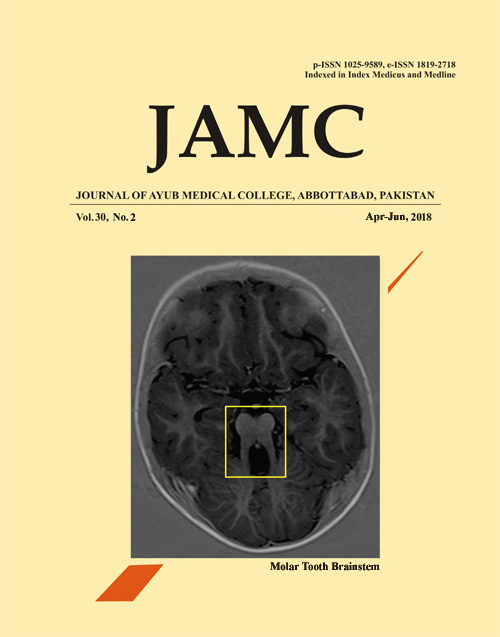LOW HBA1C; IS IT DAPSONE?
Abstract
A 51-year-old male was referred to the diabetes clinic by the GP with low HbA1c (13 mmol/mol). His complaints were dizziness and intermittent palpitations for the last two years. No precipitating cause could be identified. He denied any chest pain, shortness of breath or syncope. He had a background of schizophrenia, epilepsy, coeliac disease, depression and dermatitis herpetiformis. He was on dapsone, venlafaxine, procyclidine, furosemide, diazepam, omeprazole, meloxicam and folic acid. On examination, his pulse was 82 beats per minute, blood pressure 131/74 mm of Hg, respiratory rate was 14/minute and his saturations on room air were 94%. Neurologic, cardiovascular, respiratory and abdominal examination was unremarkable. His investigations showed Hb of 121g/L (130-180) WCC 7.8*10¹g/L (4-11), platelets 182*10¹ (150-400), MCV 83 fl (80-100), TSH 2.53 mU/L (0.4-4.0 mU/L), anti TTG 14.9 (normal). Renal, liver function, serum folate, vitamin B12 and complement levels were within normal limits with a negative ANCA and ANA. His oral glucose tolerance test was negative for diabetes with fasting and two-hour post prandial blood sugar of 4.8mmol/L and 6.9 mmol/L respectively. Because of the history of chronic Dapsone use and possibility of drug induced low HbA1C, patient was investigated along those lines. The low Hba1c was attributed to haemolysis secondary to dapsone. HbA1c improved to 42 mmol/mol within three months following discontinuation of dapsone. His haemoglobin level also normalized (142g/L). Clinicians should consider haemolysis as a possible factor falsely reducing HbA1c while interpreting results in these patients. This is of particular importance in patients with diabetes.
Keywords: Dapsone; HbA1c
References
Rahbar S, Blumenfeld O, Ranney HM. Studies of an unusual hemoglobin in patients with diabetes mellitus. Biochem Biophys Res Commun 1969;36(5):838-43.
Gonen B, Rubenstein A, Rochman H, Tanega SP, Horwitz DL. Haemoglobin A1: An indicator of the metabolic control of diabetic patients. Lancet 1977;2(8041):734-7.
Nathan DM, Genuth S, Lachin J, Cleary P, Crofford O, Davis M, et al. The effect of intensive treatment of diabetes on the development and progression of long-term complications in insulin-dependent diabetes mellitus. N Engl J Med 1993;329(14):977-86.
Intensive blood glucose control with sulfonylureas or insulin compared with conventional treatment and risk of complications in patients with type 2 diabetes study (UKPDS) group. Lancet 1998;352(9131):837-53.
International Expert Committee. International Expert Committee report on the role of the A1c assay in the diagnosis of diabetes. Diabetes Care 2009;32(7):1327-34.
Jollow DJ, Bradshaw TP, Mcmillan DC. Dapsone-induced hemolytic anemia. Drug Metab Rev 1995;27(1-2):107-24.
Kesson CM, Whitelaw JW, Ireland JT. Drug-induced haemolysis and fast haemoglobin A1 in diabetes mellitus. Br Med J 1979;2:1037-8.
Serratrice J, Granel B, Swiader L, Disdier P, De Roux- Serratrice C, Raccah D, et al. Interference of dapsone in HbA1c monitoring of a diabetic patient with polychondritis. Diabetes Metab 2002;28(Pt 1):508-9.
Albright ES, Ovalle F, Bell DS. Artifactually low hemoglobin A1c caused by use of dapsone. Endocr Pract 2002;8(5):370-2.
Downloads
Published
How to Cite
Issue
Section
License
Journal of Ayub Medical College, Abbottabad is an OPEN ACCESS JOURNAL which means that all content is FREELY available without charge to all users whether registered with the journal or not. The work published by J Ayub Med Coll Abbottabad is licensed and distributed under the creative commons License CC BY ND Attribution-NoDerivs. Material printed in this journal is OPEN to access, and are FREE for use in academic and research work with proper citation. J Ayub Med Coll Abbottabad accepts only original material for publication with the understanding that except for abstracts, no part of the data has been published or will be submitted for publication elsewhere before appearing in J Ayub Med Coll Abbottabad. The Editorial Board of J Ayub Med Coll Abbottabad makes every effort to ensure the accuracy and authenticity of material printed in J Ayub Med Coll Abbottabad. However, conclusions and statements expressed are views of the authors and do not reflect the opinion/policy of J Ayub Med Coll Abbottabad or the Editorial Board.
USERS are allowed to read, download, copy, distribute, print, search, or link to the full texts of the articles, or use them for any other lawful purpose, without asking prior permission from the publisher or the author. This is in accordance with the BOAI definition of open access.
AUTHORS retain the rights of free downloading/unlimited e-print of full text and sharing/disseminating the article without any restriction, by any means including twitter, scholarly collaboration networks such as ResearchGate, Academia.eu, and social media sites such as Twitter, LinkedIn, Google Scholar and any other professional or academic networking site.










